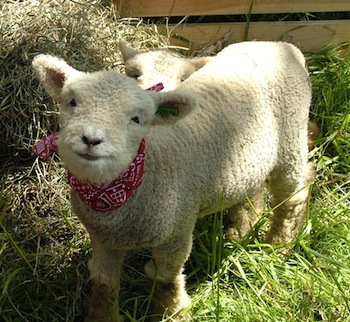Your Social Media Connections Control You More Than You Realize

a sheep with a unique scarf
Today I watched a TED talk on the value of authenticity. It was delivered by a woman in her early 20s. She gave it barefoot wearing a 19th century-looking blouse. It was a moving speech, but I couldn’t help but ask myself: Does she realize how much of a product of the Internet era she is? Seriously, a speech on authenticity and “finding your voice” at a TEDx event?
I don’t mean to make fun of this young lady. I admire her courage and speaking ability. I do, however, want to point out a central irony of social media:
Social media is an incredible outlet for individualism, but it also ties us to powerful social forces that control us more than we realize.
The image of social media, as a cultural phenomenon, is one of radical individualism. We’re into personal branding. We design our own careers. We’re truth-seeking and networked, letting our unique voices be heard in witty tweets and thought-provoking blog posts.
But is it possible that the opposite is true? Maybe social media makes us even more sheep-like in our behaviors.
This past weekend I did some catch-up reading on network theory and economic sociology. (I rarely admit this, but I picked up a master’s in sociology during my senior year of college.)
Here’s the thing: All of the research drives home the power of friends, colleagues, and social contacts in shaping our values and behaviors. Let me share a few concepts to explain.
Contagion
Nicholas Christakis and James Fowler describe the spread of influence through social networks (online or offline) as Contagion. One of their recent studies showed that if your friends are obese, you are 45% more likely to be obese yourself. If your friends’ friends are obese, your risk of obesity is 25% higher. They also show that different moods and behaviors spread in different ways: the spread of obesity, for example, is tied to gender, while smoking/non-smoking behavior is not. They talk about induction, whereby behavior spreads from person to person; and homophily, in which likeminded people cluster — or “birds of a feather flock together.” They demonstrate quite forcefully that your social network can dramatically influence your behavior. I don’t think it’s much of a stretch to suggest that this applies online as well as offline.
Embeddedness
One of the central concepts is economic sociology is Embeddedness. Economic activity, the theory goes, doesn’t happen in a vacuum, and people don’t always behave as rational actors. Hiring, closing deals, and other economic activities happen in a certain context. They’re embedded. They’re social.
The theory goes a step further with the idea of structural embeddedness. Structural embeddedness, as opposed to relational embeddedness, is defined by the extent to which a person’s mutual contacts are connected to one another. The more structural embeddedness there is in a network, the more information about each player is known to all the other players and the more constraints there are on each player’s behavior. In other words, the more embedded you are in a group or “tribe,” the more it shapes your values, norms, and behaviors.
Mimetic Desire
Mimetic theory says that we base our desires on what other people want. We do not simply imitate others’ actions, attitudes and beliefs, we imitate one another’s desires. This imitation happens at the unconscious level.
The father of Mimetic Theory is Rene Girard, a professor of French Literature at Stanford. Girard, who draws heavily from literature and the Bible, says that all conflict is rooted in mimetic desire. Because we are interconnected through our desires, Girard characterizes people as “interdividuals” rather than individuals.
Facebook advertising is based on Mimetic Desire: If I see that a friend “likes” a RangeRover and just bought a shiny new black one, that increases my desire to buy one, right? Social recommendations aren’t just about social proof, but mimesis. Mimesis helps explain why certain campaigns go viral, and why pressure to “keep up with the Joneses” may increase on social media.
The Bottom Line
Social media is a highly efficient, global medium for spreading social forces that exist in the offline world. Our social media connections and online communities shape our values, goals and worldview more than we realize.
What to Do About This?
First, it’s important to choose your social connections and communities based on the values, norms, and behaviors you aspire to have. So goes the axiom: If you want to become rich, hang out with rich people.
Second, while it’s good to extend our social networks with “weak ties”, be conscious of the unseen social forces that come with it. If you network with a bunch of fashionistas on Twitter and Facebook, you’re likely to become more fashion conscious without really even thinking about it. That may or may not be a bad thing, but it’s helpful to be conscious of it.
Finally, recognize that it’s hard — maybe impossible — to rise above the social forces in our lives. Social media may seem hyper-individualistic, but it’s also hyper-mimetic.
A sheep in a unique scarf is still a sheep. Baaaaa!
Here’s some related reading:
- Article on social media behavior of Chicago gangs
- NY Times article, “Are your friends making you fat?”
- Granovetter’s embeddedness paper (pdf)
- Good blog post on social embeddedness.
- Good intro on Mimetic Theory
- An academic paper on the Internet and collective unconscious
- Check out the trailer for the TV show, Touch. :)
Sign up to receive these posts by email.